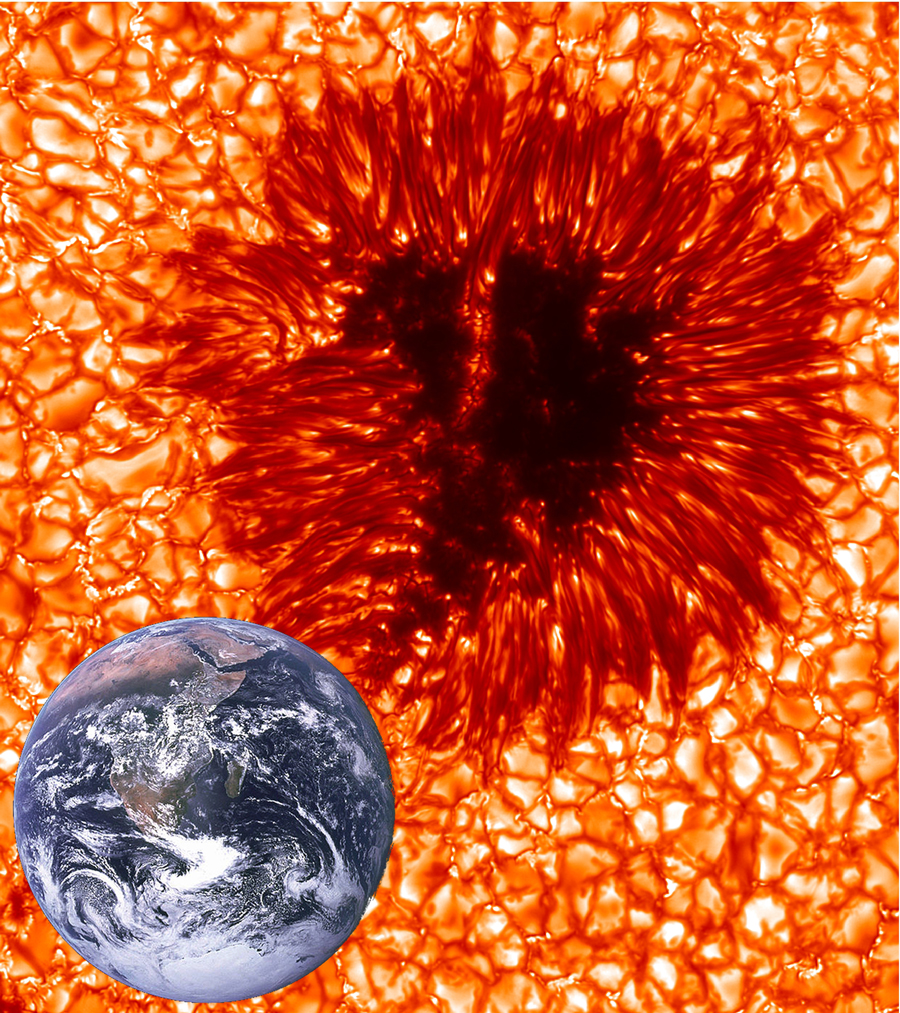
An active region of the sun that blasted out powerful solar storms four days in a row last week likely isn't done yet, scientists say.
Officially, the flare-spouting region is called sunspot 1283. But space weather experts have dubbed it "Old Faithful," after the famous geyser in the United States' Yellowstone National Park that goes off like clockwork. And the solar Old Faithful should erupt again before it dissipates, researchers said.
"It still has a fair amount of complexity," said solar physicist C. Alex Young of NASA's Goddard Space Flight Center in Greenbelt, Md. "So we still have a pretty good chance of seeing some more stuff from this one." [Photos: Sunspots on Earth's Closest Star]
An active sunspot
Sunspots are temporary dark patches on the solar surface caused by intense magnetic activity. Some last for hours before disappearing; others linger for days, weeks or even months.
Powerful solar storms often erupt from sunspots. These include radiation-flinging solar flares and phenomena known as coronal mass ejections (CMEs) — massive clouds of solar plasma that can streak through space at up to 3 million mph (5 million kph).
From Sept. 5-8, sunspot 1283 produced four big flares and three CMEs. Two of the flares were X-class events and two were M-class flares. (Strong solar flares are classified according to a three-tiered system: X-class are the most powerful, M-class are of medium strength and C-class are the weakest.)
Get the Space.com Newsletter
Breaking space news, the latest updates on rocket launches, skywatching events and more!
While the rapid motion previously observed in sunspot 1283 seems to have died down a bit, Young said, the sunspot looks poised to erupt again sometime soon.
"There's a good probability that we're still going to see at least another M-class flare, possibly another X-class flare," Young told SPACE.com.
It's not uncommon for sunspots to pop off a number of powerful flares in quick succession the way 1283 has done, he added. That seems to be the natural order of things.
"When you see one big flare, your chances of seeing another one are pretty good," Young said.

Learning more about solar storms
Solar flares directed at Earth can cause temporary radio-communication blackouts. CMEs have even greater destructive potential; they can spawn geomagnetic storms that disrupt GPS signals, radio communications and power grids. [Sun's Wrath: Worst Solar Storms in History]
So researchers are working hard to better understand sun storms, with the aim of one day being able to predict them with a great deal of accuracy and a long lead time. But they're not there yet.
"We still have a long way to go to really have the kind of forecasting capabilities that we have with terrestrial weather," Young said.
That's not to say scientists aren't making progress. Indeed, they've learned a lot about solar eruptions lately, Young said. And the knowledge base will continue to grow, he added, as a fleet of sun-watching spacecraft beam home more and more observations of Earth's star.
"We're really in a great time right now in terms of the data that we have," Young said, citing the contributions of spacecraft such as NASA's STEREO and Solar Dynamics Observatory, as well as SOHO, a collaboration between NASA and the European Space Agency. "It's going to be pretty exciting, from a solar physics and a space weather point of view."
All of these eyes on the sun should be treated to quite a show over the next several years. Solar activity has been ramping up over the last few months as the sun works toward a maximum in its 11-year activity cycle.
Scientists expect the peak of the current cycle, which is known as Solar Cycle 24, to come in 2013.
You can follow SPACE.com senior writer Mike Wall on Twitter: @michaeldwall. Follow SPACE.com for the latest in space science and exploration news on Twitter @Spacedotcom and on Facebook.
Join our Space Forums to keep talking space on the latest missions, night sky and more! And if you have a news tip, correction or comment, let us know at: community@space.com.

Michael Wall is a Senior Space Writer with Space.com and joined the team in 2010. He primarily covers exoplanets, spaceflight and military space, but has been known to dabble in the space art beat. His book about the search for alien life, "Out There," was published on Nov. 13, 2018. Before becoming a science writer, Michael worked as a herpetologist and wildlife biologist. He has a Ph.D. in evolutionary biology from the University of Sydney, Australia, a bachelor's degree from the University of Arizona, and a graduate certificate in science writing from the University of California, Santa Cruz. To find out what his latest project is, you can follow Michael on Twitter.









